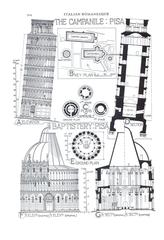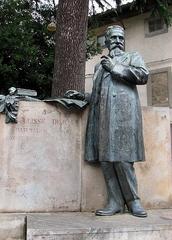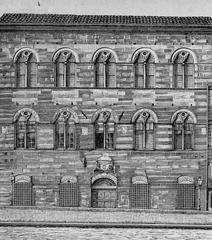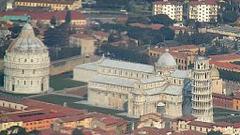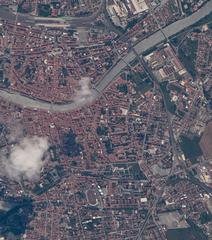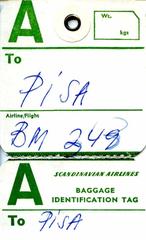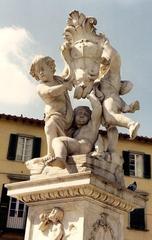Comprehensive Guide to Visiting Pisa, Province of Pisa, Italy
Date: 14/08/2024
Captivating Introduction
Welcome to Pisa, a city steeped in history, where every cobblestone whispers tales of ancient glory and medieval marvels. Imagine a place where iconic architecture not only stands the test of time but also defies gravity. Yes, Pisa’s Leaning Tower is just a teaser; the city itself is a treasure trove of wonders waiting to be explored. From its roots as a Roman colony, known as Pisae, to its rise as a maritime powerhouse in the Middle Ages, Pisa has always been a beacon of culture and commerce (Britannica, Italy This Way).
But Pisa isn’t just a relic of the past; it’s a vibrant, bustling city that invites you to lean into its local vibes. Picture yourself sipping espresso at a quaint café, wandering through ancient streets, and discovering hidden gems that only a savvy traveler like you would find. Whether you’re here to marvel at the architectural splendors in Piazza dei Miracoli or to lose yourself in the charming backstreets, Pisa promises an experience that’s as layered and rich as its history.
So, buckle up and get ready to tilt your expectations, because Pisa is about to reveal itself in ways you never imagined. This guide will walk you through the city’s must-see attractions, offer insider tips, and even challenge you with mini-quests to uncover its secrets. Ready to embark on this journey? Let’s dive in!
Table of Contents
- Historical Overview
- Must-See Attractions
- Leaning Tower of Pisa
- Piazza dei Miracoli
- Pisa Cathedral (Duomo di Pisa)
- Baptistery of St. John
- Camposanto Monumentale
- Museo dell’Opera del Duomo
- Palazzo Blu
- Botanical Gardens of Pisa
- Stroll along the Arno River
- Explore the Historic Churches
- Visit the University of Pisa
- Discover Pisa’s Hidden Gems
- Enjoy Pisa’s Culinary Delights
- Explore the Surrounding Tuscany Region
- Visitor Tips for Pisa
Historical Overview of Pisa
A City of Timeless Wonders
Picture this: a city where every stone has a story, where ancient streets echo with tales of maritime glory and medieval intrigue. Welcome to Pisa, a city that has stood the test of time, evolving from a Roman colony to a bustling modern hub. Let’s embark on a journey through its rich history, peppered with surprising facts and insider tips that only a local would know.
Ancient and Roman Pisa
Long before it became the Pisa we know today, this city was called Pisae and was possibly inhabited by the Ligurians. It became a Roman colony shortly after 180 BCE and by 313 CE had evolved into a Christian bishopric (Britannica). Remarkably, Pisa survived the collapse of the Roman Empire and remained Tuscany’s principal urban center. Leveraging its sea power and fertile hinterland, Pisa revived in the 11th century, blossoming into a vibrant commercial hub.
Medieval Pisa: The Maritime Marvel
During the Middle Ages, Pisa was one of the four powerhouse Maritime Republics, sharing the stage with Venice, Amalfi, and Genoa. This era saw Pisa dominate the western Mediterranean (Italy This Way). The city expanded by incorporating surrounding villages, leading to the creation of new streets and squares.
Must-See Attractions in Pisa
Leaning Tower of Pisa
The Leaning Tower of Pisa, or Torre Pendente di Pisa, is undoubtedly the most iconic landmark in Pisa. Construction began in August 1173, and it was originally intended as the bell tower for the Cathedral of Pisa. The tower’s unintended tilt, caused by the soft, unstable soil beneath it, became apparent during its construction. Despite numerous attempts to correct the lean, the tower was completed in the mid-14th century. Visitors can climb the 294 steps to the top for breathtaking views of the city and the surrounding Tuscan landscape. It is advisable to book tickets in advance to avoid long lines (Architecture Lab).
Piazza dei Miracoli
The Piazza dei Miracoli, also known as the Square of Miracles, is a UNESCO World Heritage site and home to some of Pisa’s most famous attractions, including the Leaning Tower, Pisa Cathedral, and Baptistery. The square’s lush green lawns and stunning architecture make it a must-visit destination. The Pisa Cathedral, with its intricate façade and impressive interior, is a masterpiece of Romanesque architecture. The Baptistery, the largest of its kind in Italy, is renowned for its acoustics and beautiful design. The Camposanto Monumentale, a historic cemetery with fascinating frescoes and ancient Roman sarcophagi, is also located here (Winalist).
Pisa Cathedral (Duomo di Pisa)
The Pisa Cathedral, or Duomo di Pisa, is a stunning example of Romanesque architecture. Its construction began in 1064, and it was consecrated in 1118. The cathedral’s façade is adorned with intricate marble work, and its interior features beautiful mosaics and a magnificent pulpit by Giovanni Pisano. The cathedral is part of the Piazza dei Miracoli complex and is a testament to Pisa’s historical and cultural significance (Winalist).
Baptistery of St. John
The Baptistery of St. John, or Battistero di San Giovanni, is the largest baptistery in Italy. Its construction began in 1152 and was completed in the 14th century. The baptistery is renowned for its acoustics, which can be experienced during regular demonstrations by the staff. The building’s exterior features a blend of Romanesque and Gothic architectural styles, while its interior houses a beautiful baptismal font and a pulpit by Nicola Pisano (Winalist).
Camposanto Monumentale
The Camposanto Monumentale, or Monumental Cemetery, is a historic cemetery located in the Piazza dei Miracoli. It was constructed in the 13th century and is said to contain soil brought back from Golgotha during the Crusades. The cemetery is home to a collection of ancient Roman sarcophagi and beautiful frescoes, some of which were damaged during World War II but have since been restored. The Camposanto offers a serene and contemplative atmosphere, making it a unique and important site to visit (Winalist).
Museo dell’Opera del Duomo
The Museo dell’Opera del Duomo, situated near the Piazza dei Miracoli, houses a remarkable collection of art and historical artifacts linked to Pisa’s cathedral complex. The museum features sculptures, paintings, and religious objects spanning several centuries. Highlights include original sculptures from the cathedral’s façade and detailed exhibits on the construction and restoration of the Leaning Tower. The museum provides a deeper understanding of Pisa’s rich artistic and architectural heritage (Winalist).
Palazzo Blu
The Palazzo Blu is a cultural center and art museum located along the Arno River. The museum hosts a variety of temporary exhibitions, as well as a permanent collection of artworks ranging from the 14th to the 20th century. The Palazzo Blu also features historical furnishings and decorative arts, providing visitors with a glimpse into Pisa’s artistic and cultural history. The museum’s central location makes it an easy addition to any itinerary (Winalist).
Botanical Gardens of Pisa
The Botanical Gardens of Pisa, established in 1544 by the University of Pisa, are among the oldest botanical gardens in Europe. The gardens feature a diverse collection of plants and trees from around the world, arranged in themed sections. Highlights include ancient magnolia trees, a medicinal herb garden, and a greenhouse housing tropical species. The gardens also contain historical elements such as old fountains and statues, adding to their charm. The Botanical Gardens offer a peaceful escape from the bustling city and are perfect for a leisurely stroll or a relaxing picnic (Winalist).
Stroll along the Arno River
A stroll along the Arno River provides a different perspective of Pisa. The riverbanks are lined with historic buildings, charming cafes, and picturesque bridges. Walking along the river, visitors can enjoy the scenic views and observe the daily life of the city. The Lungarni, or streets along the river, are particularly beautiful at sunset, offering a tranquil and romantic atmosphere (Winalist).
Explore the Historic Churches
Pisa is home to several beautiful historic churches beyond the Piazza dei Miracoli. The Church of Santa Maria della Spina, a small Gothic church located along the Arno River, is known for its intricate exterior and stunning sculptures. The Church of San Paolo a Ripa d’Arno, one of the oldest churches in Pisa, features a mix of Romanesque and Gothic architectural styles. The Church of San Michele in Borgo, located in the heart of the city, is another noteworthy site with its beautiful façade and rich history (Nomadic Matt).
Visit the University of Pisa
The University of Pisa, founded in 1343, is one of the oldest universities in Italy. The university’s historic buildings and beautiful courtyards are worth exploring. The Orto Botanico, the university’s botanical garden, is a highlight, offering a peaceful retreat with its diverse plant collections. The university also hosts various cultural events and exhibitions throughout the year, providing visitors with opportunities to engage with Pisa’s academic and cultural life (Nomadic Matt).
Discover Pisa’s Hidden Gems
While the main attractions draw the most visitors, Pisa also has several hidden gems worth exploring. The Keith Haring mural, “Tuttomondo,” located near the Pisa Centrale train station, is a vibrant and colorful piece of public art. The Museo Nazionale di San Matteo, housed in a former Benedictine convent, features an impressive collection of medieval and Renaissance art. The Giardino Scotto, a historic garden and park, offers a peaceful escape with its lush greenery and ancient fortifications (Nomadic Matt).
Enjoy Pisa’s Culinary Delights
Pisa is known for its delicious food, and visitors should take the time to explore the city’s culinary offerings. Traditional Tuscan dishes, such as ribollita (a hearty vegetable soup) and pappa al pomodoro (a tomato and bread soup), can be found in local restaurants. Pisa is also famous for its focaccia and cecina (a chickpea flatbread). For a sweet treat, try the local gelato or a slice of torta co’ bischeri, a traditional Pisan cake filled with chocolate and rice. Joining a cooking workshop is a great way to learn how to make these dishes and experience the local food culture (Salt in Our Hair).
Explore the Surrounding Tuscany Region
Pisa’s location in Tuscany makes it an ideal base for exploring the surrounding region. The Chianti wine region, located about an hour’s drive from Pisa, is famous for its picturesque vineyards and rolling hills. Visitors can enjoy wine tastings and tours of local wineries, as well as sample traditional Tuscan cuisine. The nearby town of Lucca, with its well-preserved Renaissance walls and charming historic center, is another great destination for a day trip. Florence, the cradle of the Renaissance, is also easily accessible from Pisa and offers a wealth of art, history, and culture (Winalist).
By exploring these must-see attractions and hidden gems, visitors can fully appreciate the rich history, vibrant culture, and stunning architecture that make Pisa a unique and memorable destination.
Visitor Tips for Pisa, Province of Pisa, Italy
Best Time to Visit
Pisa experiences a Mediterranean climate, making it a year-round destination. However, the best times to visit are during the shoulder seasons of spring (April and May) and autumn (September and October). During these months, the weather is pleasant, and the crowds are significantly fewer compared to the peak summer months. Summer in Pisa can be extremely hot, with temperatures often soaring above 30°C (86°F), and the city can be crowded with tourists (The Travel Folk). Winter is also an option, with minimal crowds, but the weather can be cold and rainy.
Clothing and Packing Tips
Given Pisa’s hot summers, it is advisable to wear lightweight, breathable clothing. Women should consider ankle-length, fine cotton skirts or dresses with long sleeves, or lightweight trousers. Men should opt for cotton shirts paired with lightweight chinos or cargo pants. Sunscreen, hats, and sunglasses are essential to protect against the strong UV rays (Use Bounce).
Getting Around
Pisa is a compact city, and most of its attractions are within walking distance of each other. The main tourist attractions, including the Leaning Tower, Cathedral, Baptistery, and Campo Santo, are located in the Campo dei Miracoli (Field of Miracles), a UNESCO World Heritage site (PlanetWare). For those who prefer not to walk, Pisa has an efficient public transportation system, including buses and taxis. Renting a bicycle is also a popular option for exploring the city.
Accommodation
For those looking to stay close to the main attractions, there are several convenient hotels near the Leaning Tower of Pisa and Piazza dei Miracoli. Some recommended options include Hotel Pisa Tower, Grand Hotel Duomo, and Hotel Bologna (PlanetWare).
Safety and Health
Pisa is generally a safe city for tourists. However, like any popular tourist destination, it is important to be aware of pickpockets, especially in crowded areas. Keep your belongings secure and be cautious when approached by strangers. In case of any medical emergencies, Pisa has several hospitals and clinics, including the Santa Chiara Hospital, located near the city center.
Language
While Italian is the official language, English is widely spoken in tourist areas, hotels, and restaurants. Learning a few basic Italian phrases can enhance your travel experience and help you connect with the locals.
Currency and Payments
Italy uses the Euro (€). Credit and debit cards are widely accepted in most establishments, but it is advisable to carry some cash for small purchases and in case you visit places that do not accept cards. ATMs are readily available throughout the city.
Dining and Cuisine
Pisa offers a variety of dining options, from traditional Italian trattorias to modern restaurants. Some local specialties to try include “cecina” (a chickpea flour pancake), “pappa al pomodoro” (a tomato and bread soup), and “panzanella” (a bread and tomato salad). For a sweet treat, try “torta co’ bischeri,” a traditional Pisan cake filled with chocolate, rice, and nuts. Popular dining areas include Borgo Stretto and Via Santa Maria, which are lined with cafés and restaurants (PlanetWare).
Shopping
For shopping enthusiasts, Pisa offers a range of options from high-end boutiques to local markets. Borgo Stretto is a popular shopping street with a mix of international brands and local shops. The Piazza delle Vettovaglie hosts a daily market where you can find fresh produce, local cheeses, and other regional specialties.
Day Trips
Pisa’s geographical location makes it an ideal base for exploring the surrounding region. The lovely walled town of Lucca is a short train ride away and offers a charming escape with its medieval architecture and cobblestone streets. South of Pisa is Livorno, a port city known for its seafood and canals. For those interested in wine tasting, the Tuscan countryside offers numerous vineyards and wineries. Florence, another major Italian city, is also easily accessible from Pisa (PlanetWare).
Beaches
Although Pisa itself does not have beaches, the nearby coastal town of Viareggio, just 15 minutes to the north, offers some of Italy’s best beaches. These beaches are defined by private beach clubs (stabilimento balneare), which for a daily fee provide beach loungers, umbrellas, and the use of changing tents, showers, and restrooms. For a more active outdoor experience, consider hiking the trails between the towns of the Cinque Terre, located further north along the coast (PlanetWare).
Cultural Etiquette
When visiting religious sites such as the Pisa Cathedral and Baptistery, it is important to dress modestly. Shoulders and knees should be covered, and hats should be removed upon entering. Photography is generally allowed, but it is always best to check for any restrictions.
Luggage Storage
If you need a place to store your bags while exploring the city, Bounce luggage lockers are available in easily accessible locations throughout Pisa. These lockers provide a safe and economical solution for storing your belongings (Use Bounce).
Tours and Guides
To make the most of your visit, consider booking a guided tour of Pisa’s main attractions. Knowledgeable guides can provide valuable insights into the city’s history and culture, and answer any questions you may have. Small group tours are recommended for a more personalized experience (TheTravel Folk).
Call to Action
As you wrap up your journey through Pisa, it’s clear that this city is much more than its famous Leaning Tower. It’s a living tapestry woven with history, culture, and a dash of Italian flair. From the awe-inspiring architecture of Piazza dei Miracoli to the tranquil strolls along the Arno River, Pisa invites you to explore its many layers. Whether you’ve marveled at the acoustics of the Baptistery or tasted the local delicacy, cecina, you’ve experienced the essence of what makes Pisa a unique and unforgettable destination (Architecture Lab, Winalist, Nomadic Matt).
But the adventure doesn’t have to end here. With Pisa as your base, the stunning Tuscan countryside and neighboring towns like Lucca and Florence await your exploration. And remember, every journey is made richer with a bit of local insight. So why not download Audiala? Our expertly crafted audio guides will lead you through Pisa’s hidden stories and secret corners, making your travel experience both educational and entertaining. Ready to unlock the secrets of Pisa and beyond? Your adventure is just a tap away.
References
- Pisa, 2023, Encyclopaedia Britannica source url
- Pisa travel guide, 2023, Italy This Way source url
- Leaning Tower of Pisa, 2023, Architecture Lab source url
- Things to do in Pisa, 2023, Winalist source url
- Pisa travel tips, 2023, Nomadic Matt source url
- Best time to visit Pisa, 2023, The Travel Folk source url
- The best time to visit Pisa, 2023, Use Bounce source url
- Pisa tourist attractions, 2023, PlanetWare source url
- Pisa travel guide, 2023, Salt in Our Hair source url


